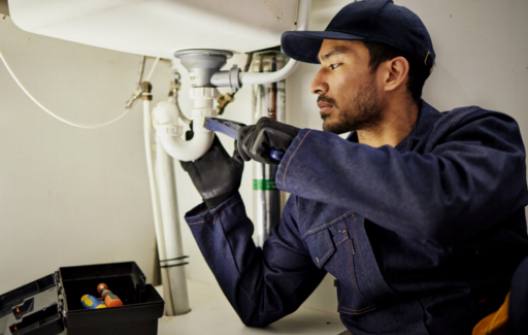Toilet repair may seem like a simple task, but it can quickly turn into a nightmare if not done correctly. There are several common mistakes that DIYers often make when trying to fix a toilet issue. From using improper tools to neglecting manufacturer instructions, these errors can lead to costly repairs and even potential health hazards. In this article, we will discuss the top toilet repair mistakes to avoid, ensuring that your DIY project around the modern home is completed successfully and with minimal stress.

Using Improper Tools for the Job
Using improper tools for a toilet repair job can lead to serious damage and additional issues. It's important to use the right tools for the job to ensure that the repair is done correctly and safely. Making do with the wrong tools can result in stripped or damaged components, leaks, and a whole lot of frustration. Always make sure you have the proper tools on hand before attempting any toilet repair tasks.
Mismatching Component Sizes
Mismatching component sizes can be a common mistake when it comes to toilet repairs. Using the wrong-sized parts can lead to leaks, inefficiency, and potential damage to the toilet. It's important to carefully measure and ensure that any replacement parts, such as flappers, gaskets, or supply lines, are the correct size for your specific toilet model. Taking the time to double-check the measurements before making any replacements can save you from costly and time-consuming errors in the long run.
Over-Tightening Connections and Fittings
Over-tightening connections and fittings is a common mistake made during toilet repair, and it can lead to serious issues down the line. When you over-tighten connections and fittings, you risk damaging the components or causing leaks. It's important to follow the manufacturer's guidelines for the recommended torque on connections and fittings to prevent damage and ensure a proper seal. Be mindful of the amount of force you apply when tightening connections to avoid costly problems in the future.
Neglecting the Flange and Wax Seal
The flange is the circular piece that connects the toilet to the floor and the wax seal sits between the flange and the bottom of the toilet. These components are crucial in ensuring that there are no leaks or sewage odors coming from the toilet. It is important to make sure that the flange is securely attached to the floor and that the wax seal is properly in place before installing the toilet. Ignoring these components can lead to costly repairs in the future.
Ignoring Manufacturer Instructions and Local Codes
Ignoring manufacturer instructions and local codes can lead to serious issues when it comes to toilet repair. Manufacturers provide specific instructions for a reason, and it's important to follow these guidelines to ensure the proper functioning and longevity of your toilet. Likewise, local building codes are put in place to protect the safety and well-being of residents, and failing to adhere to these codes can result in legal repercussions and unsafe living conditions. It is crucial to thoroughly read and understand the manufacturer instructions and to check local codes before beginning any toilet repair project.
Failing to Turn Off Water Supply and Test for Leaks
Failing to do this can result in a messy and potentially damaging situation if water begins to leak. Once the water supply is turned off, it is crucial to test for any leaks before continuing with the repair. This can help to prevent any unexpected issues later on and ensure that the repair is successful.
Disregarding Cleanliness and Maintenance Practices
Disregarding cleanliness and maintenance practices in toilet repair can lead to a host of issues and complications down the line. Neglecting to thoroughly clean the toilet and surrounding areas before and after repair can result in unsanitary conditions and the spread of germs. Additionally, failing to properly maintain the toilet can lead to the buildup of grime, mold, and other unsightly and potentially harmful substances. It is essential to prioritize cleanliness and maintenance in toilet repair to ensure a safe and sanitary environment for all occupants of the home.
Omitting Replacement of Old Parts and Final Inspection
It's important to thoroughly inspect all components of the toilet and replace any worn out parts to ensure that the repair is done effectively and will last long-term. Additionally, a final inspection should be conducted to make sure that all the repairs have been properly executed and that the toilet is functioning as it should.Skipping this step could result in ongoing issues and the need for further repairs in the future.
